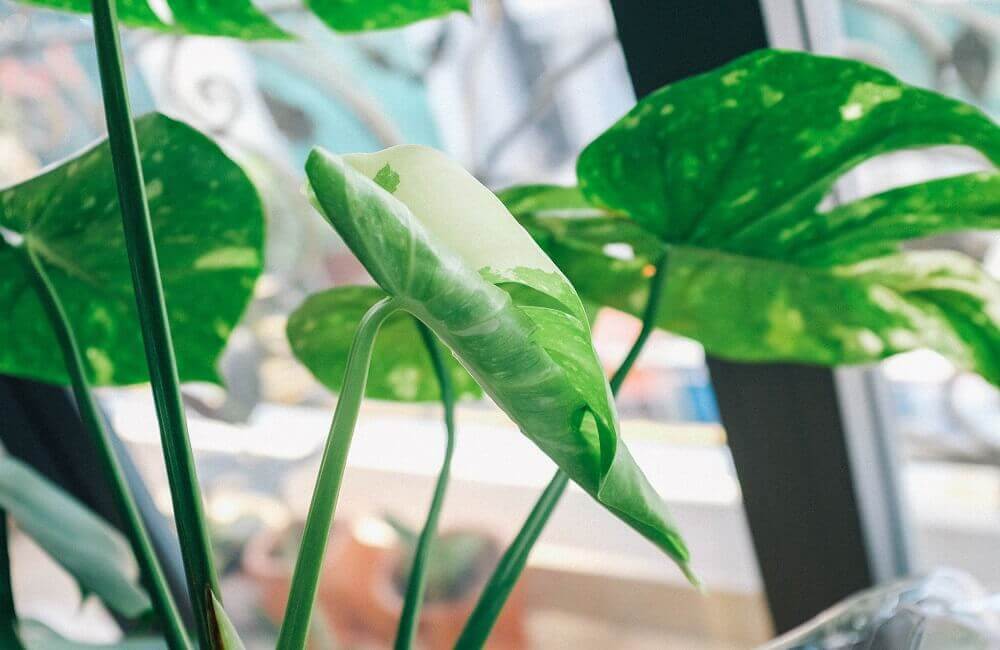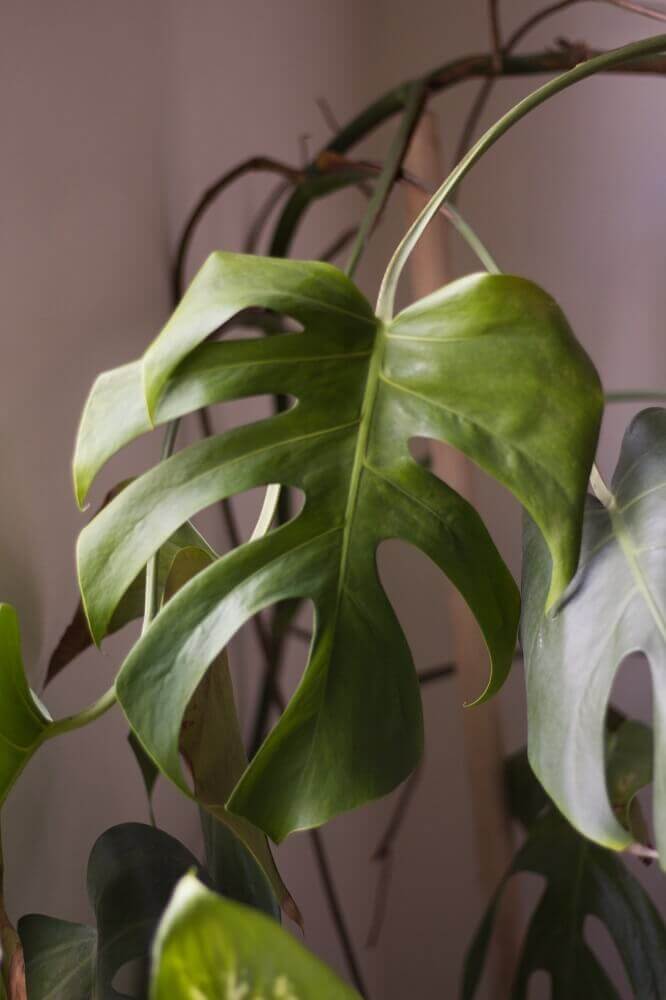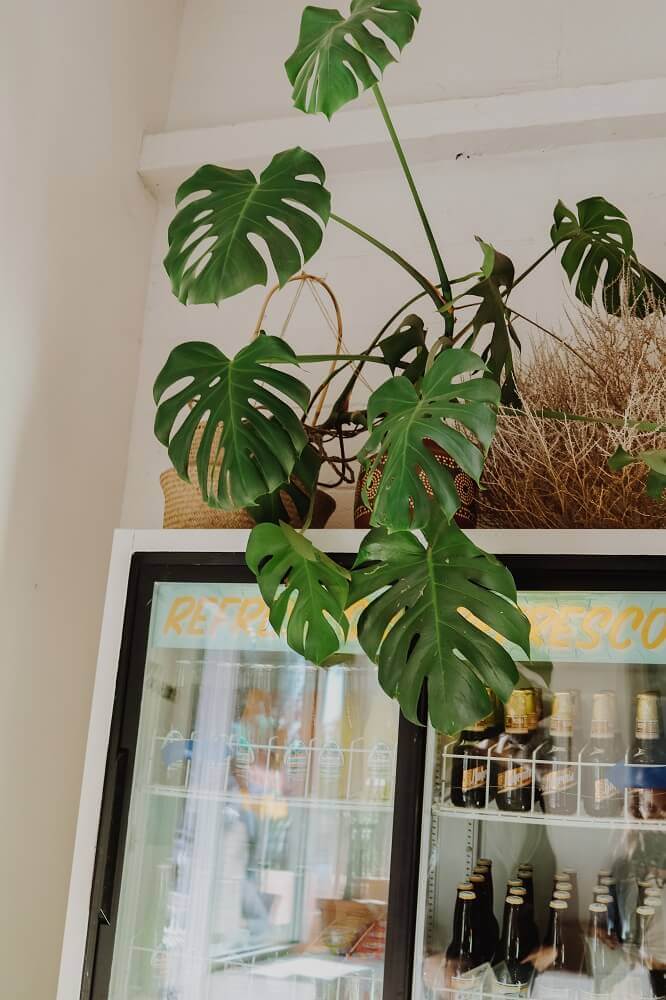
If you are a plant enthusiast, you must be familiar with the Swiss Cheese Plant, which is also popular by its Latin name Monstera Deliciosa. Monstera plants are considered one of the most popular houseplants around the world. It is probably the striking split leaves that distinguish Monstera from other plants.
Even though monstera is a low-maintenance plant, it is very sensitive to some external factors and as a plant parent, you must be aware of them. Stem and leaves drooping is a kind of problem you can encounter if something wrong has happened to your beloved plant. You may find it frustrating if you see your lively friend suddenly drooping. Monstera is a kind of house plant that never likes being neglected.
Underwatering, poor drainage, low humidity, etc. are some of the major causes of the drooping problem. With gentle care, you can help the plant to bounce back again. In this article, we will talk about causes and solutions for the stem and leaves drooping problem in the Monstera Deliciosa plant.
Table of Contents
Why Is My Monstera Droopy? Causes

If you witness that the stem and the leaves of your Monstera have become flabby or have started to droop, you have to find out the actual reason behind this problem before reconsidering the care requirements. Have a look at some common reasons behind the problem and get prepared for the solution.
-
Underwatering
Underwatering can harm your little friend in many ways. If you do not give your plant adequate water, it will react negatively. Underwatering can cause nutrient deficiency and consequently issues like dry and drooping leaves.
Monstera is a tropical plant and it requires sufficient water to survive. Too little water makes soil dry and restricts the plant from extracting nutrients. If you witness the stem and leaves of your Monstera turning lifeless, you must be careful about watering.
You can push your finger a couple of centimeters into the soil to feel the level of moisture in the soil. A moisture meter can also do the task for you. Remember, damp tropical forests are Monstera’s natural habitat. So, you cannot expect the plant to thrive in dry soil.
-
Overwatering
Like underwatering, overwatering can be dangerous for your little Monstera plant. If you are watering the plant excessively, you are making the plant sick. Overwatering causes root damage and leaves drooping as well. If you do not stop overwatering, the weak-looking leaves start developing brown patches all over.
Also, waterlogged soil can make it difficult for roots to breathe. Damaged or rotten roots make the entire plant weak and drooping leaves are a sign you need to watch out for. You can also perform the finger test in this case. Push your finger a couple of centimeters into the soil and if you find it soggy; be careful with your watering practices.
-
Poor Drainage
Even if you are right regarding your watering policy, draining issues may keep you wandering. A poor drainage system can also cause the drooping problem. If the drainage holes in the pot are not good enough, water and moisture will never be able to make their way. The soil will become waterlogged if the drainage holes do not work properly.
Waterlogged soil is not good for the roots of any plant and your Monstera is no exception. A poor drainage system will increase the level of moisture in the soil and leave the root to suffocate. Root rot is the most expected outcome of this problem and the entire plant will become weaker as a consequence.
-
Temperature Stress
Monstera Deliciosa is a tropical plant, so you cannot expect it to grow in a cold atmosphere. The plant will thrive best in temperature ranges between 18 and 29°C (64 and 84°F). A sudden drop in temperature can also affect the overall health of your Monstera plant.
If the temperature is below the comfort level, your plant is under temperature stress. Likewise, extreme heat can cause water stress and make it difficult for the plant to extract water through its roots.
Temperature stress can be caused by a plant’s exposure to both low and extreme temperatures. Drooping is a common sign of temperature stress and you must be aware of that.
-
Low Humidity
Tropical plants like Monstera Deliciosa love the humid environment and low humidity can cause many problems including stem and leaves drooping. Remember, your plant can be suffering from a lack of humidity even if the soil is not dry.
The winter months are not favorable for tropical plants like Monstera Deliciosa. Both cooling and heating systems like ACs and heaters can be dangerous for the plant, as such systems always decrease the humidity level in the room. Remember, if the humidity level is below 40%, your Monstera will work hard for excessive transpiration. This makes leaves and foliage weak and thirsty.
-
Repotting
Repotting or transplanting can give your Monstera real stress. If the condition is favorable, your Monstera plant can grow rapidly. Seeing the plant gaining its size, you may consider repotting the plant. A slightly larger pot can help the plant grow spontaneously.
Sometimes indoor plants like Monstera Deliciosa react negatively to transplanting. If the plant has received transplant stress, it may react by drooping its stem and leaves. During the process of repotting the plant, roots are often left in bad shape. You can also damage the roots during the repotting process.
Related: What Is The Best Soil For Monstera Deliciosa?
-
Fertilizer Issue
When grown in the wild, a Monstera Deliciosa plant can sprawl to heights of around 60 feet. So if you provide the plant with the right environment and support, your Monstera can grow 12 to 15 feet tall in a pot indoors. To support its growth and nutritional needs, you need to feed the plant fortnightly.
However, over-fertilization can damage the roots and cause drooping. Too much application of fertilizer can cause root toxicity, where plants find it difficult to absorb water and nutrients using their roots.
How To Fix Droopy Monstera Deliciosa?

Stem and leaves drooping is a serious issue and you should take measures to identify the real cause. However, treating a Monstera suffering from a drooping issue is quite simple and you do not have to be an expert for this.
If you find your Monstera in a sad and limp state, inspect the plant to confirm the actual reason behind the problem. Have a look at some possible solutions to the drooping issue. I hope this may help your Monstera revive quickly.
-
Give The Plant An Adequate Amount Of Water
Even though a tropical plant like Monstera Deliciosa requires sufficient watering to thrive, it can also suffer from overwatering. As we have mentioned, both under and overwatering can be dangerous for your plant. So you need to be careful when watering the plant.
If you think the plant is drooping due to under watering issue, water the plant twice or thrice a week. This will help the plant to revive slowly.
However, never think about giving it loads of water for a quick revival, as this can invite another problem. Overwatering can cause irreparable damage to the roots and eventually make way for many other problems including stem and leaves drooping.
-
Fix The Drainage Issue
If you have found a drainage issue responsible for the drooping problem in your Monstera plant, you have to fix it before clogged water starts damaging the roots. Using well-drained soil in the pot can be a good idea, as well-drained soil will allow the water to get out of the pot easily.
However, before you put some well-drained soil in the pot, make sure the drainage holes are active. You can also follow the pebble method to improve the drainage facility of the pot. Once you have checked the potholes, put some pebbles or stones at the bottom of the pot. This simple step will keep the drainage holes open for water and moisture.
When it comes to the drainage system, clay pot works better than plastic pots. Clay or terracotta pots allow some water to evaporate through the body. This way, you can minimize the chance of root rot and drooping leaves problem.
-
Be Careful About the Temperature
Avoid keeping the Monstera plant in a too hot or cold environment. Temperature stress can kill your plan if you neglect it for a long time. If you think temperature stress is causing stem and leaves to droop, you should measure the room temperature using a thermometer. Temperature between 18 and 29°C (64 and 84°F) is suitable for an indoor Monstera plant.
If you notice temperature fluctuation, place the plant somewhere else. Also, never put the plant in front of heaters or ACs, as these machines can provide extreme temperature to the plant.
Small houseplants like Monstera Deliciosa are less tolerant to sudden drop or rise in temperature. Therefore, control the temperature and let the plant thrive in an ideal environment.
-
Keep Humidity Under Control
Moderate heat and humidity is the basic need for a Monstera Deliciosa plant. Hence, you must aim to provide it to your plant. Therefore, if a low humidity level is responsible for the stem and leaves drooping, you should take measures to help the plant fight the problem.
Adding moisture to your Monstera can be an easy way to solve the issue. You can use a spray bottle to gently mist the leaves of the plant, twice or thrice a week. A quick shower with lukewarm water can also be helpful. This will help you to clean the long-standing dust and residues off the leaves.
If you want to be more precise and consistent, use a humidifier. The device will keep the humidity level in a room in check. You can set the exact humidity level you want for your Monstera plant and let the automatic Humidifier do its job.
Related: Why Are My Monstera Deliciosa Leaves Curling? Causes And Solution
-
Repotting
Repotting or transplanting can give your Monstera stress by disturbing your plant’s growing conditions. However, the good thing is that repotting shock does not last for long. Your Monstera plant can revive within a few days and start regaining its natural posture.
The plant needs proper care and support after transplantation to get cured of the shock. Make sure the plant is getting adequate water and moderate heat and humidity right after getting repotting shock. Here, one thing you must remember is that there is no need to break the root ball when transplanting the Monstera plant unless the roots are infected.
-
Go Easy With The Fertilizer
If you are confident that the stem and leaves of your Monstera plant are drooping due to the build-up of salts and root toxicity, take measures to eliminate the fertilizer salts from the soil. If you think that you have overfed the plant, use water to flush the soil.
Let the water run through the soil to minimize the concentration of harmful salts. You can do it 5-10 times to remove excess salts from the soil. Another easy way to save your plant from harmful elements in the soil is by repotting the plant in fresh soil.
Conclusion
Under and over watering are the most common reasons for stem and leaves drooping problem in Monstera plant and the good thing is that you can address the issue easily. However, other issues like temperature stress, low humidity, repotting stress, fertilizer, etc. can also cause your Monstera plant to droop. We suggest you examine the signs attentively before you find the root cause and think about a solution. An accurate diagnosis will help you to choose the right cure. Drooping stem and leaves problem can be fixed easily even with some household items and materials. In this article, we have talked about some of the most common reasons behind the drooping problem and discussed some easy methods to address it. We will be glad to hear from you. We value your engagement and are open to new ideas and suggestions on the same.
Reference List

Ranjan Singh Moirangthem is a media professional based in India, currently working as a freelance copywriter. Growing up in a hill station and now living in a concrete jungle, he finds solace in the green corners of the city, be it parks or his housing society garden. He’s even passionate about plants and gardening and shares his experience by writing in-depth and well-researched articles for our readers.
